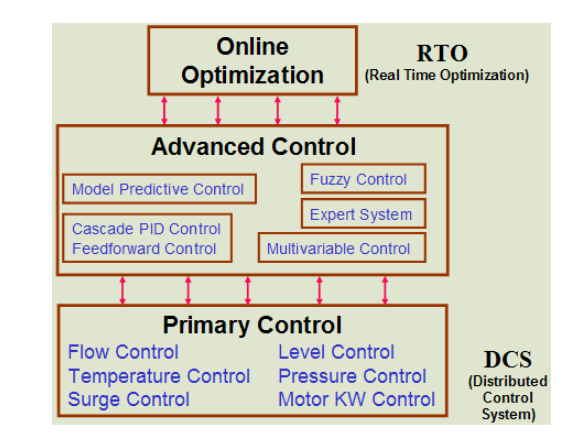
Can I use model predictive control to increase energy efficiency in your plant? Yes, you certainly can.
Today, companies are tackling increasing pressure from consumers and governmental agencies to reduce energy consumption and greenhouse gas emissions. Many large manufacturers have taken a proactive approach by implementing new systems that can monitor their facilities more closely and allow them to cut down on wasted energy costs.
One of these advanced technologies is model predictive control (MPC). So, what do you know about MPC and its applications? If not much, this blog post will highlight some of the crucial aspects of MPC.
What is Model Predictive Control?
Model predictive control is a control strategy that determines future system states using current and past measurements. These predicted states are used to develop the optimal control solution for the present, minimizing the difference between predicted and measured states.
This MPC has advantages over Direct Digital Control (DDC), including better disturbance rejection and faster dynamic response. In addition, the development of MPC is compatible with existing open-loop control strategies.
What Are The Three Components Of MPC?
Model predictive control has three key components: Model, Prediction, and Control.
Model-
The model includes the dynamic behavior of a system being controlled and any noise or disturbance acting on that system. An optimal solution to a problem may not be feasible for an open-loop system to reach.
MPC overcomes this issue by allowing the model to update itself autonomously based on previous information, allowing it to compensate for unpredictable disturbances or noise. It is beneficial when incorporating system dynamics into the controlled plant’s behavior.
Prediction-
The prediction component of MPC uses the model to predict future states of a system and outputs those predictions as reference trajectories. This component is necessary for MPC because it allows the model to update itself based on previous measurements. This enables MPC to compensate for disturbances or otherwise unpredictable noise using current methods.
Furthermore, Model predictive control can incorporate both uncertainty and constraints into the model by varying its prediction capabilities. MPC also has a general form that you can use to predict any number of states, which makes it ideal for non-linear modeling systems.
Control-
The control component receives desired trajectories and reference trajectories and states, and real-time measurements. MPC uses this information to determine how it can move the controlled system from its present state to a future predicted state in the fastest and most efficient way possible.
Model predictive control has many advantages over linear MPC, including-
- better disturbance rejection
- faster dynamic response
- its ability to be used with existing control strategies
- the absence of deadtime
- lower Model predictive control algorithm complexity
MPC has many real-world applications in industries such as aerospace and automotive manufacturing, chemical production, oil refining, and power generation. In fact, it is an integral part of General Electric’s jet engines, which have Model predictive control embedded into their larger Model-based systems.
How Can You Use MPC To Improve Energy Efficiency?
Did you know model predictive control can help your company improve energy efficiency? This information is very much accurate. However, you will need a competent operator to yield the desired result.
Model predictive control is a computer-based algorithm that constantly adjusts an industrial process to meet changing demands. The goal of MPC is to maintain the process at the desired setpoint by using fewer resources than older “on-off” systems.
MPC is an optimization technology that minimizes costs by maximizing performance. Furthermore, you can also use it to improve energy efficiency for various materials processing industries, including chemical manufacturing and power generation.
In fact, MPC has been shown to reduce energy consumption from boilers by as much as 50% in some cases. And MPC is a technology that you can use to control a wide variety of processes, including steam turbines and compressors.
A boiler or power plant that uses MPC constantly adjusts the burners, fuel feed rate, and other equipment to produce the desired amount of heat required for electricity generation. This technology can make these adjustments every few seconds to maintain a consistent process output.
On the other hand, conventional control systems work with a preset number of “on” and “off” states that you cannot adjust in real-time. These older, less efficient systems switch between on and off states based on measurements from sensors. Basically, MPC works by taking the guesswork from maintaining a stable output while using fewer resources.
Why Do Some Manufacturing Companies Not Use MPC?
If MPC technology can provide significant savings, why doesn’t every manufacturing company use it globally?
Model predictive control, while highly effective, requires an operator to have a basic understanding of math and technology for implementation. However, with the help of Model Predictive Control experts, companies can quickly and easily implement MPC technology within their facilities.
Are You Looking For A Reliable Model Predictive Technology Service Provider?
Pi Control Solutions is a company that specializes in helping businesses leverage Model Predictive Control solutions to maximize performance and improve energy efficiency. This company provides technology solutions designed for different manufacturing industries.
Pi Control Solutions offers MPC services to:
– Energy and chemical companies that want to improve energy efficiency
– Manufacturers in any industry that need to control a boiler or other heat-generating processes
– Facilities managers concerned with reducing greenhouse gas emissions
To learn more about Model Predictive Control technology and how it can improve energy efficiency for your facility, contact Pi Control Solutions.



